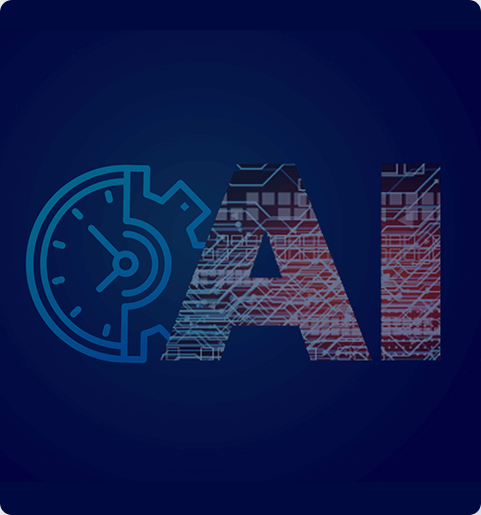Asset Performance Management (APM) with Operational AI
Key Takeaways
- Asset performance management is evolving to provide risk prioritized insights, essential to increasing reliability and availability.
- Industrial IoT and AI are key ingredients in advancing the APM agenda and enabling companies to produce a higher return on invested capital.
High production reliability needs a well executed asset performance management (APM) strategy. Industry 4.0 brings new technologies and a transformative approach to industrial productivity – a new mindset that can be applied to APM. Operational AI makes some of the most powerful, yet difficult to use parts of Industry 4.0 available to reliability and operations teams. Falkonry strives to bring APM and Operational AI together and we have a bit to share based on our learning over the last few years of work in this area.
Industry 4.0 provides capabilities necessary for an advanced APM strategy. Operational AI is critical in making these capabilities easy to use and scale. The diagram in figure 1 captures the relationship between these three technology trends.

A core tenet of Industry 4.0 is the sharing of information between systems and people who need it. Key to making this happen are the technologies grouped under “IIoT” in figure 1.
- Data from sensors collected via (cloud) networked assets are stored in Big Data systems where it is made available to any and all users who might need it. Those users may be people or machines within and across organizational boundaries.
- Advanced analytics, including artificial intelligence (AI) applications and simulation software, use this data to make better decisions.
- Those decisions drive improved production and operational outcomes.
The blue lines in figure 1 show where Industry 4.0 technology applies to specific steps in implementing an APM strategy.
- For RCM and CBM analyses, Industry 4.0 technologies provide the historical data, gathered from across organizations and job functions, required to get a full understanding of equipment behavior and failures over time. By sharing data and analysis capabilities using cloud enabled technologies, multiple teams can collaborate. Together they can bring their expertise to bear in identifying important failure modes and the conditions which indicate impending onset. Industry 4.0 also accelerates engineers’ decision making with simulation / digital twin capabilities.
- Performing the actual condition monitoring and making predictions also requires Industry 4.0 technologies. Data from sensors is connected from widely distributed assets via the cloud. It is then processed by powerful AI and other advanced analytics. The results are communicated back to the organizations and business systems which will use the information.
- Maintenance planning and tracking involves groups and business systems that cross organizational lines. Industry 4.0 technology helps blur those lines by processing raw data into actionable information and by distributing that information to all the stakeholders in a simple, transparent way. This enables those groups to focus on doing their work instead of on moving and transforming data.
AI can play a powerful role in many of the APM steps. However, effective use of traditional AI tools requires specialized knowledge and skills, which are typically the domain of data scientists rather than of reliability or maintenance engineers. Operational AI is an easily consumed packaging of technologies intended for casual users and non-data scientists to use.
Falkonry Clue is a good example of Operational AI as it combines a number of powerful AI technologies into a package which the existing operations team members can use without needing advanced training.
The steps in figure 1 with orange Falkonry icons are areas where operational AI is helpful:
- Finding conditions for maintenance – Patterns discovered in the operational data can help reliability experts find failure modes. Rather than creating a set of rules that define a potential failure (e.g. when pressure is greater than X and temperature is greater than Y…), they can just label examples of the potential failures in the data. In this easy-to-use way, Operational AI surfaces conditions which may be too difficult or subtle for a human to define.
- Making predictions of maintenance need – In some cases, the patterns which operational AI detects can be used to estimate time until failure. As with maintenance condition detection, the patterns which foretell a failure and the methods for converting that information into a remaining useful life (RUL) are typically beyond what an unaided staff member can achieve.
- Performing condition monitoring – This step includes understanding failures or trigger conditions so that the correct service action can occur. Operational AI converts the raw data into a form which the AI algorithms can use and reports the conditions detected. In addition, before creating a work order it is helpful for maintenance techs or engineers to check the time period near the potential failure for information which helps them confirm the root cause. Operational AI solutions provide explanatory information which helps teams understand causes and develop understanding of the current condition by comparing to known reference conditions.
Industry 4.0 provides the technical infrastructure on which the rest of an advanced APM strategy relies. Operational AI makes it practical to use at scale.
Falkonry spent years developing an Operational AI which enables your reliability organization to take advantage of powerful analytic techniques that improve the performance of your APM strategy. With Clue, we have put the power of Industry 4.0 into a small, easy to deploy package which lets you get started showing value quickly. Contact us for a demo and a conversation about how to get started.





